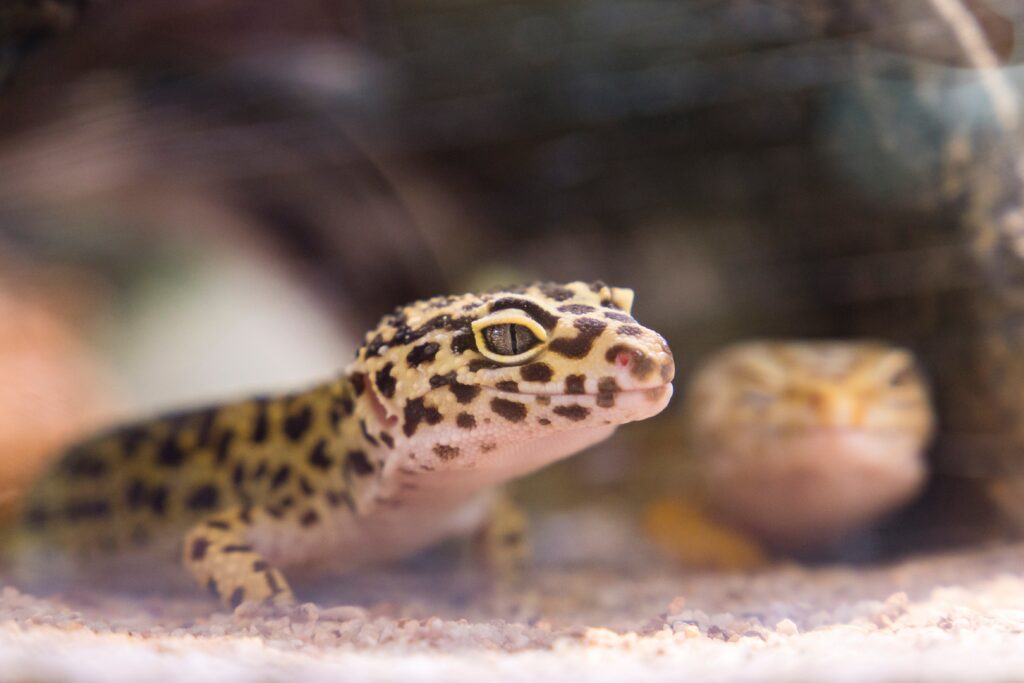Top 10 Pet Care Tips for Reptiles for Beginners
Did you know that over 4.5 million American households embrace reptiles as their unique and scaly companions? Reptiles, from slithering snakes to charming chameleons, have earned their place in our hearts as intriguing and low-maintenance pets. However, caring for these remarkable creatures isn’t without its challenges. That’s where our top 10 pet care tips for reptiles come in.
While reptiles might not purr or wag their tails, they have their own distinct charm and needs. Whether you’re already a proud reptile owner or considering welcoming one into your home, understanding the essentials of reptile care is paramount. These captivating creatures have been around for millions of years, and by providing proper care, you can ensure they thrive in your care.

In this comprehensive guide, we’ll delve into the world of reptile care, offering you valuable insights to create a comfortable and healthy environment for your scaly friend. From habitat setup to dietary requirements, we’ll cover it all. So, let’s embark on this reptilian adventure and equip you with the knowledge and tips needed to provide top-notch care for your reptilian companion.
Let’s delve even further into the world of reptile care, here is a comprehensive guide that covers not just the basics but also the finer details of caring for your scaly companion.
1. Research, Research, Research:
Before you bring a reptile into your home, dedicate time to researching the specific species you intend to adopt. The more you know about their natural habitat, behavior, and specific care requirements, the better equipped you’ll be to provide them with a happy and healthy life.
Consider factors like the reptile’s size, lifespan, activity level, and any potential health issues commonly associated with the species. Consult reputable books, online resources, and even forums dedicated to reptile enthusiasts to gather as much information as possible.
2. Proper Enclosure:
Creating the right habitat for your reptile is paramount. Different reptiles have varying enclosure needs, but there are some general principles to follow:
Size:
Ensure the enclosure is appropriately sized for your reptile’s species and size. They should have ample room to move, explore, and thermoregulate.
Substrate:
Choose an appropriate substrate that mimics their natural environment. Options include coconut coir, cypress mulch, or newspaper, depending on the species.
Hide Spots:
Provide hiding spots for security. Natural elements like rocks, logs, and plants can create a comfortable and enriching environment.
Temperature Gradient:
Create a temperature gradient within the enclosure, with a warm basking spot and a cooler area. Use heat lamps, under-tank heaters, or ceramic heat emitters to maintain the desired temperatures.
3. Hydration Matters:
Proper hydration is fundamental to reptile health. The method of providing water varies among species. Some reptiles drink from shallow dishes, while others prefer to lap up water droplets from leaves or walls. Research your reptile’s preferred method and ensure access to clean, fresh water.
Humidity levels are also species-specific, so maintain the appropriate humidity within the enclosure to prevent skin and respiratory issues.

4. Temperature and Lighting:
Reptiles rely on external heat sources to regulate their body temperature, making proper temperature and lighting crucial. Invest in quality thermometers and hygrometers to monitor temperature and humidity levels consistently.
For many reptiles, access to UVB lighting is vital for metabolizing calcium and maintaining overall health. Ensure the lighting matches the specific requirements of your reptile’s species.
5. The Right Diet:
Reptile diets are incredibly diverse, ranging from carnivores that consume insects and rodents to herbivores that thrive on fruits and vegetables. It’s essential to understand your reptile’s dietary needs.
For insectivorous reptiles, choose a variety of live insects and consider gut-loading them with nutritious food before feeding. Herbivores need a balanced diet rich in greens, vegetables, and fruits. Some reptiles may require additional supplements, like calcium and vitamins, so consult with a veterinarian or reptile expert for specific dietary recommendations.
6. Handling with Care:
Handling your reptile can be a rewarding experience, but it’s essential to approach it with caution. Not all reptiles enjoy being handled, and even those that do may have limits. Start with short, gentle handling sessions and gradually increase the time as your reptile becomes more comfortable.
Always wash your hands before and after handling to prevent the transmission of bacteria. Be patient, and respect your reptile’s boundaries. Stress can be harmful, so watch for signs of discomfort and allow your pet to retreat to its hiding spot when needed.
7. Regular Health Checks:
Regular veterinary care is essential for your reptile’s well-being. Find a veterinarian experienced in reptile care and schedule routine check-ups. Additionally, become familiar with the common health issues associated with your reptile’s species, so you can spot potential problems early.
Watch for signs such as changes in appetite, behavior, skin condition, or any lumps or bumps. Keep accurate records of your reptile’s health, including feeding schedules and shedding patterns, to aid your veterinarian in diagnosis.

8. Keep It Clean:
Maintaining a clean enclosure is crucial for preventing health issues. Remove feces, uneaten food, and shed skin promptly. Disinfect the enclosure regularly, but be sure to use reptile-safe cleaning products. A clean habitat promotes a healthy reptile.
9. Environmental Enrichment:
Reptiles benefit from mental and physical stimulation. Provide environmental enrichment to mimic their natural habitat and encourage natural behaviors. This could include climbing branches, hiding spots, and puzzle feeders.
Change the enclosure’s layout periodically to keep things interesting. Just be sure to monitor your reptile’s reaction to these changes, as some may find them stressful.
10. Learn and Adapt:
Finally, embrace a lifelong learning approach to reptile care. Reptile care is not one-size-fits-all, and as you gain experience, you might need to make adjustments to your pet’s care routine.
Stay open to new information, advances in reptile husbandry, and the latest research. Attend reptile expos and connect with fellow reptile enthusiasts to exchange knowledge and experiences. Your commitment to ongoing education will ensure that your reptile companion enjoys the best possible care throughout its life.
Conclusion
With these top 10 pet care tips for reptiles, you’re well-equipped to embark on a fulfilling journey of reptile ownership. Remember that each reptile is an individual with specific needs and preferences, so always observe their behavior and health closely.
Caring for a reptile can be a rewarding and educational experience. Whether you’re mesmerized by the grace of a leopard gecko, the elegance of a ball python, or the curiosity of a bearded dragon, the world of reptiles offers a captivating adventure right in the comfort of your home. Enjoy every moment and the unique bond you share with your scaly friend.
Also Read:
Pet Care Tips for Cats for Beginners
Pet Care Tips for Dogs for Beginners



